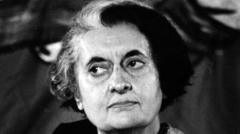

The provision for President's Rule in India, enshrined in Article 356 of the Constitution, allows the Union government to take direct control of a state's administration when its government is unable to function according to constitutional provisions. Often termed a "Constitutional Emergency" or "State Emergency," though not explicitly named so in the Constitution, it is a powerful tool that has shaped the country's federal structure and Centre-State relations since 1950.
The rationale behind Article 356 lies in Article 355, which mandates the Union to protect every state against external aggression and internal disturbance, ensuring governance aligns with the Constitution. Thus, President's Rule can be imposed if the President, based on the Governor's report or otherwise, believes that a state's government cannot function constitutionally. This can arise due to various reasons, such as a ভেঙ্গে যাওয়া coalition, a Chief Minister's loss of majority, or a general inability to elect a Chief Minister.
Historically, the implementation of Article 356 has been a contentious issue. The first instance was in Punjab in 1951. Over the decades, it has been invoked 134 times across various states and union territories. Some states, like Manipur and Uttar Pradesh, have experienced it most frequently, reflecting recurring political instability. Jammu & Kashmir holds the record for the longest period under President's Rule due to separatist movements.
Notably, the Indira Gandhi government between 1966 and 1977 imposed President's Rule 39 times. Similarly, the Janata Party, after coming to power, invoked it in nine Congress-ruled states. This frequent use led to accusations of political misuse, where the provision was used to dismiss state governments led by opposing parties.
However, the Supreme Court's landmark judgment in S. R. Bommai v. Union of India (1994) brought significant changes. The court laid down strict guidelines for imposing President's Rule, emphasizing that it should be a last resort, not a political tool. The judgment mandated that a government's majority should be tested on the floor of the House and that the President cannot dissolve a state assembly without parliamentary approval. This ruling significantly curtailed the arbitrary use of Article 356, making its imposition subject to judicial review based on mala fide intention.
The effects of President's Rule are profound. The State Legislative Assembly is either suspended or dissolved, and the executive authority is transferred to the Central government, exercised through the Governor. The Parliament assumes legislative powers over the State, with the President able to issue ordinances when necessary. While the state's general public is not directly affected, major legal or administrative changes are typically stalled.
President's Rule can initially last for six months and can be extended for a maximum of three years with parliamentary approval every six months. The 44th Amendment (1978) added constraints, stating that it cannot extend beyond one year unless there is a national emergency or the Election Commission certifies difficulties in conducting assembly elections.
While Article 356 is intended as a safeguard against governance failures, its potential for misuse remains a concern. Recent instances, such as the imposition in Manipur, highlight the ongoing challenges in maintaining constitutional governance amid political instability. The judiciary's role as a watchdog, especially post the S. R. Bommai case, is crucial in preventing arbitrary applications and reinforcing India's federal structure. The ongoing debate emphasizes the need for responsible state administration and Centre-State cooperation to uphold the principles of Indian democracy.